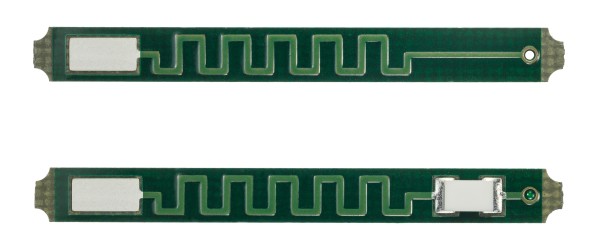YAGEO Nexensos offers Pt-RTDs (Resistance Temperature Detector) mounted on a small printed circuit board (PCB), designed to meet the strict requirements of heat meter applications. A unique conductive meander located between the SMD (surface mount device) type platinum sensor and the connection pads for the system cable reduces heat transfer and the associated measurement error. This design provides accurate and stable temperature measurement with an immersion depth of only 15mm. The RTD is optimized for assembly in immersion and duct-type sensors, and for operating temperatures from -40 °C to 150 °C. With soldering pads located on opposite sides of the PCB, the need for insulating the solder joint is eliminated. Matching the tube diameter to the sensor width allows for a simple, self-centering, electrically isolated installation, with no need for additional insulation material that might negatively impact response time.
The design optimization minimizes manual assembly steps and supports automated or semiautomated processing. Potting with a thermally conductive paste is recommended for optimal performance.
The small SMD element in a consistent fixed location combined with a minimum required immersion depth significantly reduces thermal mass, resulting in fast, stable measurement over the entire lifetime of the sensor.



